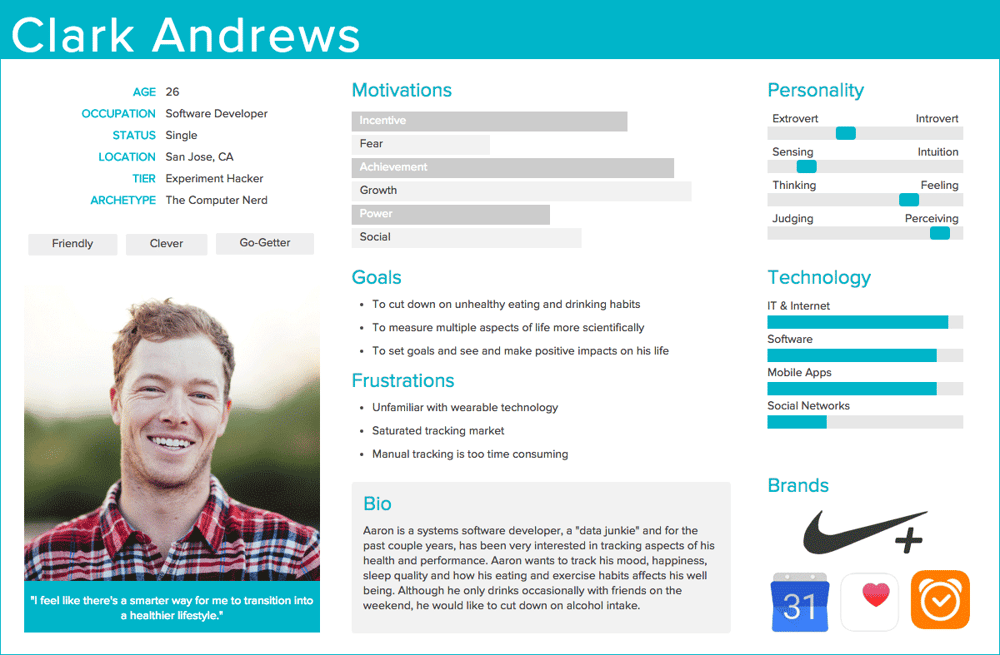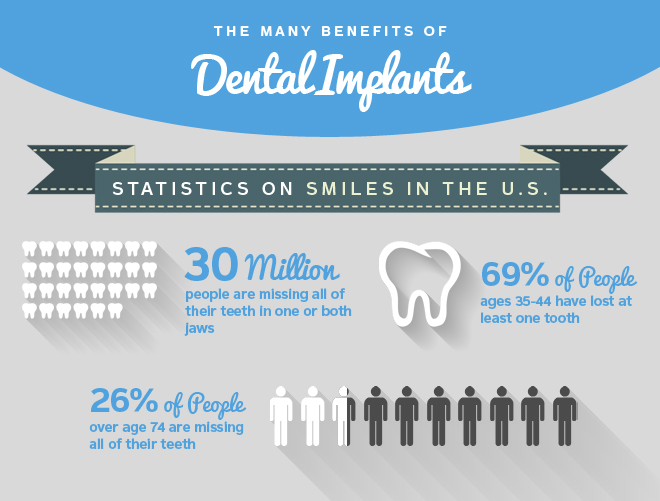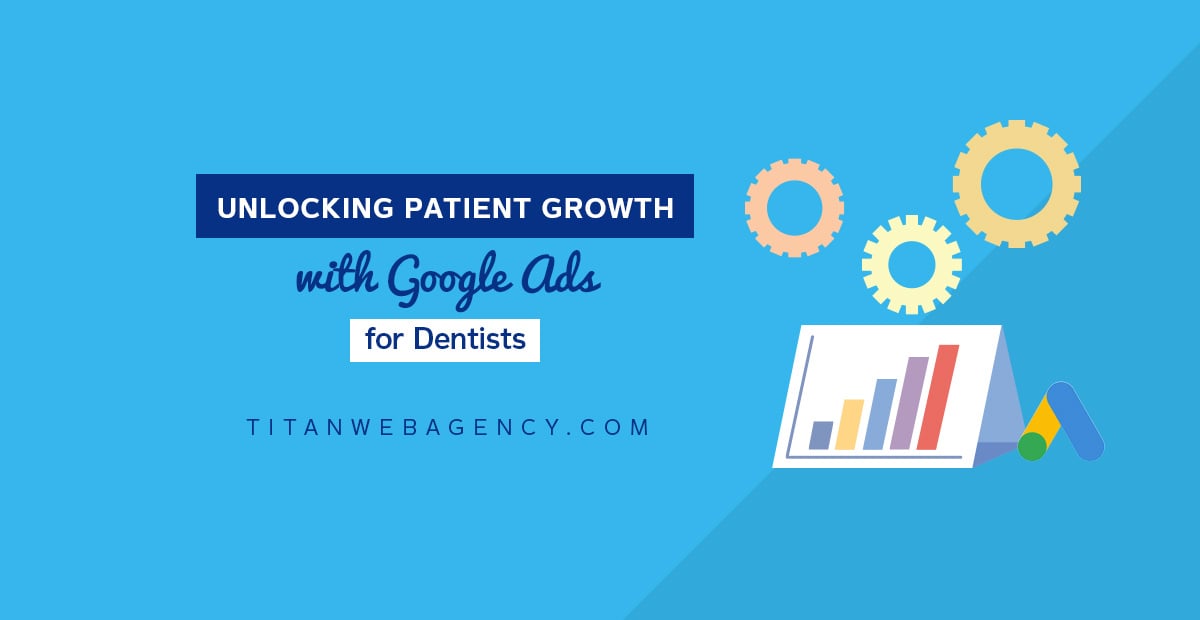Your Dental Implant Marketing Guide: 7 Strategies To Generate More Patient Leads

*This post was originally published June 29th, 2016, and extensively updated Aug 7, 2025.
Dental implants represent one of dentistry's greatest advances, yet millions of potential patients remain unaware that these solutions even exist or how they work. That disconnect creates a massive opportunity for dental practices willing to market effectively and reach the people who need them most.
If you're offering dental implants but not seeing the number of cases you’d like, you're not alone. Many practices struggle to reach qualified patients or turn interested patients into booked appointments, even with such a large and growing market.
At Titan Web Agency, we partner with dental practices to help them secure the implant cases they want. We’ve seen what works and what doesn’t when marketing these high-value treatments.
One question we hear often is:
What are the best ways to approach dental implant marketing?
The best approach combines building trust, actively targeting local patients who are actively searching for solutions, and clearly showing the value of implants. A strong plan includes local SEO, AI SEO/GEO, patient reviews, educational content, and paid ads tailored to the concerns of implant candidates.
BONUS DOWNLOAD: 5 Ways to Market Dental Implants Like a Pro! Grab our free guide and learn exactly how to get in front of your target implant market with our free guide.
Understanding the Market Opportunity
The numbers tell a compelling story about untapped potential in dental implant marketing. The American College of Prosthodontists estimates that approximately 120 million Americans are missing at least one tooth, and about 36 million have no teeth at all. The opportunity to engage with this audience increases as tooth loss becomes more prevalent with age.
Despite these overwhelming numbers, many people who could benefit from dental implants are simply unaware of their existence. The Pew Research Center found that 90% of US adults use the internet, and many research dentists online before making treatment decisions. This creates a perfect storm of opportunity for practices that understand how to connect with their target audience through digital channels.
Typically, the buyer's journey will look something like the one below. 
What Drives Patient Decision Making?
Before developing any marketing strategy, you must understand what potential patients want to know. Three questions dominate every consultation:
- How much do dental implants cost?
- What options are available for my specific situation?
- Who provides the best dental implant services in my area?
Your entire marketing approach should address these concerns while building trust and demonstrating expertise.
Top Dental Implant Marketing Ideas to Boost Your Practice
At Titan Web Agency, we work with dentists every day to help them attract more implant patients. While some methods are unique to implant marketing, the most success comes from applying core digital marketing strategies in a way that speaks directly to the needs and concerns of implant candidates.
Below are seven proven strategies you can implement to attract more high-value dental implant cases.
1. Market Dental Implants to the Right Audience
There are two essential components to identifying your target audience for dental implants. The first is common to all dental marketing: narrowing your audience geographically. Unless you are in a rural area with little competition, your practice will compete with others nearby to attract new patients. You will start by defining the towns, cities, suburbs, or neighborhoods that are part of your target area.
The second element is demographic targeting. You must understand who is in the market for dental implants and how to educate and reach them effectively.
While some demographic research can be done online, your current patient data is often the most valuable resource. Most dental practices today use digital records, allowing you to generate reports that provide important insights such as:
- The average and range of your patients’ ages
- The typical distance patients travel to your office
- How long have patients stayed with your practice
These insights can help define a local radius to focus your marketing efforts and determine the most effective ways to reach the dominant age groups in that area. While it may feel tedious, these steps are critical if you want to attract new patients through an effective dental implant marketing strategy.
Using Personas to Guide Your Dental Implant Marketing
Once you know the audience you want to reach, the next step is to build patient personas. These are fictional but research-based profiles of your ideal patients, designed to guide how you speak to each group in your marketing.
Start by asking yourself:
What kind of person is most likely to need dental implants?
Here are four common personas:
- Older adults who have lost teeth due to age or neglect
- People who have lost teeth in an accident
- Adults with medical conditions that cause tooth loss
- Athletes or professionals who have experienced dental trauma
Each of these groups has distinct motivations and concerns. Rather than speaking to all of them at once, create separate personas and tailor your messaging for each one.
As you can see, the examples I mentioned are four distinct groups of people. The first group is older, the second and third could include people of any age, and the fourth group is likely to be young and active. Instead of lumping them all into one, you’ll create several target personas and market to each one.
Here’s an example of a complete buyer persona:

Your personas should include key demographic and personal information, such as:
- Age range, marital status, occupation, and location
- What they hope to achieve with dental implants (such as improved health, better appearance, or easier chewing)
- What barriers might hold them back (including cost, lack of insurance, fear, or social stigma)
- How they will pay (finance, cash, etc.)
- Their reasons why their smile/teeth are a priority
Once you define your patient personas, you can create content (blog posts, before/after images, social media posts, videos, etc) and ads (Google/Bing Ads) that speak directly to each group's needs. Highlight the benefits of dental implants that matter most to them and address their common concerns. This strategy can improve your messaging and attract more qualified dental implant leads.
2. Get the Word Out With Content Marketing
Content marketing remains one of the most effective ways to attract and convert dental implant leads. It not only builds trust and positions your practice as the go-to expert but also keeps your services top of mind as patients move through their decision-making process.
In fact, according to the Content Marketing Institute, 87% of marketers claim that content marketing builds brand awareness, 74% report that it directly generates leads, and 62% say it helps nurture those leads into paying customers.
For dental implant practices, that kind of strategic content can guide someone from initial curiosity to booked consultation, while reinforcing your expertise every step of the way. But what kind of content actually works? And how do you make sure the right people see it?
First, Address Patient Needs with Foundational Content
The most effective content speaks directly to the questions and concerns your potential patients have. Your goal is to educate them, build their confidence, and empower them to take the next step. A blog on your website is the perfect place to house this foundational content.
Key benefits of consistent blogging include:
1. Improved Local SEO: Target keywords specific to dental implants in your geographic area. And in this day and age, you will want to consider the impact of the AI Overviews as well, and optimize for AI.
2. Expertise: Answer common patient questions and highlight your practice's success stories.
3. Educational Value: Offer helpful, in-depth content that addresses topics such as:
- How the dental implant process works.
- Common fears and how you address them.
- Financing options and cost breakdowns.
- The life-changing benefits of treatment.
- Answering FAQ
Next, Repurpose Your Content for a Wider Reach
While blogging is the foundation, you can reach more people by repurposing your message into different formats. This caters to various learning styles and platform preferences.
Consider creating:
- Informational Videos: Walk patients through the implant process visually.
- Graphics: Simplify complex information such as treatment timelines or cost comparisons, or showcase branded before and after photos.
- Patient Testimonials: Share powerful success stories in video or written format to build social proof.
Then, Distribute Your Content Through Social Media
A well-managed social media presence gets your valuable content in front of the right audience and allows you to connect with potential patients on a more personal level.
To make the most of your social media efforts:
- Focus Your Efforts: Concentrate on the two or three platforms where your target audience is most active.
- Stay Consistent: You can use scheduling tools such as Buffer or Hootsuite to maintain a regular posting schedule and track engagement.
- Tailor Your Posts: Adapt your content for each platform. For example, younger audiences may prefer short-form videos (TikTok, Instagram Reels), while older patients might engage more with visual guides on Facebook.
- Be Responsive: Monitor comments and messages, and respond promptly to show you are engaged and professional. An inconsistent or inactive presence can damage your credibility.
- Use Analytics: Evaluate which posts perform best and adjust your content strategy accordingly.
You can also save a lot of time by scheduling your posts in advance to publish at the best times throughout the day—then let the tool do the rest. Here’s an example of how that works using a social media management tool like Buffer:
Read our blog post: Are You Violating HIPAA Online? What Every Dentist Needs to Know
Finally, Always Include a Clear Call to Action
Every piece of content you create, whether it is a blog post, video, or social media update, should guide prospective patients on what to do next. A strong call to action encourages them to explore your implant services, subscribe to your newsletter, or book a consultation. When planned intentionally, this step supports your broader dental marketing strategy by turning interest into engagement and engagement into appointments.
3. Why Google Ads Are Essential for Dental Implant Marketing
One of the most effective ways to attract new patients quickly is by running targeted Google Ads. This strategy works best when focused on a single service, such as dental implants, paired with a compelling offer and a landing page that is fully aligned with the searcher's keyword, ad message, and intent. When implemented correctly, PPC advertising for dental implants can significantly increase your marketing ROI and help fill your schedule with high-value patients.
As of 2025, businesses see an average return of 2 for every 1 spent on Google Ads. For dental practices, advertising implants can deliver even better results if you handle it correctly or partner with an experienced dental PPC company like Titan Web Agency.
Need help?
Key Strategies for Successful Dental Implant PPC Campaigns
To get more dental implant patients through Google Ads, focus on these core elements. We'll break it down into strategy, ad creation, and landing page optimization for clarity.
- Choose the Right Keywords: Research terms such as "dental implants near me" or "affordable dental implants [your city]" that potential patients actually search for. Tools such as Google Keyword Planner can help identify high-intent keywords with low competition.
- Target the Ideal Audience: Narrow your reach to people in your area who need implants, such as by age (e.g., 40+), location, or search behavior. This ensures your ads reach qualified leads without wasting budget. This goes back to speaking to your ideal persona that we discussed earlier.
- Craft an Enticing Ad: Design ads that highlight benefits such as "pain-free implants" or "same-day smiles" to make prospective patients eager to click.
- Build an Optimized Landing Page: Create a dedicated page that mirrors the ad's messaging, offers real value (e.g., a free guide or consultation), and positions your practice as the go-to solution for their dental issues.
Creating an Effective Ad for Dental Implants
Once your strategy is set, focus on the ad itself. Here's what the Google Ads for dentists look like:
- Keyword Optimization: Place your top keywords strategically in the headline and description to improve ad relevance and ranking.
- Attention-Grabbing Headline: Use a compelling hook, such as "Restore Your Smile with Expert Dental Implants – Free Consult Today!"
- Clear Description: Briefly explain what happens next, such as "Get affordable, long-lasting implants from top-rated dentists. Schedule now and save."
- Effective Call-to-Action (CTA): Add an irresistible prompt such as "Book Your Free Implant Consultation*" to drive immediate clicks. (*$250 Value!)
- Relevant Visuals: Include an eye-catching image, such as a before-and-after smile, to boost engagement (use alt text such as "dental implant before and after" for SEO).
Optimizing Your Landing Page for Conversions
Your landing page is where interest becomes action. Use language that matches your ad copy to assure visitors that they are in the right place. Keep the focus entirely on dental implants, and create dedicated pages for each major service you offer. For example, one page can focus on implants while another highlights general dentistry.
Place your primary call-to-action above the fold so patients do not need to scroll. A visible button, such as “Schedule Your Free Implant Consultation,” near the top of the page performs well. Consider repeating your CTA at the bottom to capture interest from readers who scroll through your content.
Below are examples of high-performing dental landing pages that include many of these best practices and have delivered strong conversion results.
By implementing these proven strategies for dental implant PPC campaigns, your practice can generate more qualified leads and improve overall return on investment.
If managing Google Ads feels like a heavy lift, our team specializes in dental marketing strategy and can manage every aspect for you.
4. Direct Mail Dental Implant Marketing: Reaching Prospective Patients in Your Area
We focus on online marketing for a reason, but that doesn’t mean offline marketing isn’t necessary or useful. I strongly recommend using direct mail marketing to let people in your target area know about the benefits of dental implants. At a bare minimum, this helps you develop some name recognition- but hopefully, it does more than that!
As of 2024, the direct mail response rate for marketing lists was 3.63%, making it more impactful than email marketing. There’s something about receiving a piece of mail that captures attention and makes it difficult to ignore what’s being offered.
Of course, you’ve got to use the correct strategy if you want to reap the rewards of direct mail dental implant marketing. Here are some pointers:
- Choose your target audience carefully. You may choose to create separate mailers for each of your dental implant marketing personas. You may also target a mix of new and repeat patients.
- Make your mailer visually compelling. It should be clear that you’re focusing on dental implants. It’s important to choose clear text and relevant images to accompany your offer. The design is extremely important; be sure to read our blog post about creating a dental brochure, as almost every concept also applies to creating a postcard.
- Track the performance of your direct mail campaign. It’s the best way to measure your success since you won’t have access to the usual automated reports you can get with social media marketing. You can achieve this through a discount code, or by sending them to a specific URL, or by using call and lead tracking (which you really should be doing anyway!)
- Where it makes sense, personalize your mailings. One thing that can help you save money is to create a basic mailer that you can personalize for each marketing persona you create. The basic information about dental implants remains the same regardless of who you’re targeting.

Direct mailers can help you reach potential dental implant patients in their homes, where they can take time to consider your offer and decide whether dental implants are right for them.
5. Showcase Your Success with Patient Social Proof
For a decision as personal and significant as dental implants, prospective patients rely heavily on social proof to build trust and confidence in your practice. Showcasing the real-life success of your patients through testimonials, reviews, and visual results is one of the most powerful marketing tools at your disposal.
Let Satisfied Patients Tell Their Stories with Reviews and Testimonials
Patient reviews are a cornerstone of marketing these days. A heartfelt testimonial can do more to build trust than any brochure, because it's perceived as coming from a relatable source.
- Encourage Reviews: Actively encourage satisfied patients to leave reviews on key platforms such as Google, Healthgrades, or any other prominent review platform in your area- except Yelp- don’t ask for reviews on Yelp.
- Feature Testimonials: Highlight the best testimonials on your website, especially on your dental implant service pages. Focus on quotes that mention specific outcomes, such as comfort during the procedure or a renewed sense of confidence.
- Engage with Feedback: It is crucial to monitor and respond to all reviews. A thoughtful response, particularly to any negative feedback, demonstrates that you value transparency and patient care.
Provide Compelling Visual Evidence with Before-and-After Photos
Often, the best way to demonstrate the life-changing impact of dental implants is with clear, photographic evidence. Just as before-and-after photos are used to show the effectiveness of teeth whitening or braces, they can tell a powerful story for your implant services.
Many people with missing teeth are self-conscious and may not fully appreciate how implants can restore not only their smile but also their confidence. Seeing a side-by-side comparison of a patient before treatment and after, with a complete, natural-looking smile, tells them everything they need to know at a glance. It turns an abstract concept into a tangible, desirable outcome.

Image Credit: Kennewick Dental
A Critical Note on Patient Privacy (HIPAA)
When using any patient stories or images, you must prioritize their privacy.
- Always get written consent from any patient whose photo or detailed testimonial you use in your marketing materials.
- When responding to online reviews, be mindful of HIPAA regulations. Acknowledge the feedback professionally without revealing any personal health information. If you need templates for patient consent forms, they are widely available online.
If you need to grab some waivers, we've got you covered, along with many other dental templates. Just enter your info below to get immediate access

6. Offer Financing Options to Make Dental Implants More Accessible
Dental implants are a significant investment, and in most cases, dental insurance doesn’t cover much (if any) of the cost of dental implants. As you likely know, the cost is the biggest barrier to moving forward with treatment.
To make implants more accessible, it’s important to present clear financing options and feature them prominently in your marketing. When patients know they can break the cost into manageable payments, they are more likely to consider treatment seriously.
Consider offering payment plans or partnering with third-party financing providers.
There are CareCredit, Lending Club, Sunbit, and more. Many dental practice management software solutions include tools to track payment schedules and maintain compliance. A well-structured financing system allows patients to receive the care they need while ensuring your practice remains financially protected.
7. Engaging in Community Sponsorships and Partnerships for Dental Implant Marketing
Building relationships in your local community can lead to long-term patient growth, especially for high-trust services such as dental implants. Here’s how to make that happen:
-
Sponsor local events – Show up where your audience is by supporting local fairs, runs, or charity events.
-
Support school programs – This creates visibility with families and promotes goodwill.
-
Partner with fitness centers or retirement communities – Aligns your practice with health-focused and age-relevant audiences.
-
Offer educational sessions or free consultation vouchers – Adds value to the partnership while introducing your services in a low-pressure way.
These efforts:
-
Increase brand visibility in non-clinical settings
-
Allow potential patients to associate your practice with credibility and care
-
Often leads to word-of-mouth referrals and long-term trust
By engaging outside the office, you give people multiple ways to connect with your practice before they ever schedule an appointment.
One thing to emphasize:
The number one deciding factor for someone choosing you for dental implants is trustworthiness.
If you're out in the community, actively meeting potential patients and building genuine connections, you're also building trust —arguably the most powerful conversion tool you have.
Brainstorm and Test Dental Implant Marketing Ideas: Maximize Your Campaign Effectiveness
Many online marketing companies for dentists boast that they have a magic formula to help market dental implants and direct potential patients to your practice. The truth is, yes, some things typically work, but oftentimes, it can be trial and error to determine which particular strategy will work for you.
Conducting proper research before implementing a marketing plan can help eliminate some errors. However, it is typically not until a marketing campaign has been launched and is running for a month or more that you can see what’s being shared, reposted, liked, and discussed. Here are some suggestions to help.
Track Your Dental Implant Marketing Campaigns for Insights
Tracking the source of your new dental implant patients is as important as your dental implant marketing strategy itself. Once you have a better idea of what appeals to your target audience, you can use the data to fine-tune the areas that work.
If you sign up for Google Analytics, it will provide some details about your traffic sources: from social, search, or direct. You can also add UTM tracking to your links and get more details about where your traffic comes from. Titan Web Agency’s call and lead tracking does this for you as well.
See What Resonates with Your Target Audience
Using a social media management tool, you get solid data on what people like and what people aren’t as interested in. Once you determine who’s interested in what you offer, it’s important to sustain their interest and provide value in every post. People aren’t expecting you to keep their attention for long periods of time. You usually have just a few seconds to capture their attention, and in many instances, they’re only going to give you 10-20 seconds. Use that time wisely.
Take Advantage of Your Data
Once you’ve implemented your social media campaign and are getting some engagement, you can start creating posts based on questions or comments you receive from your updates. These comments and questions can be used as blog posts, videos, or graphics. If you see a lot of questions about how long dental implants last, for instance, you can write a blog about it. You’ll be providing your readers with the information they need about dental implants.
You can gather additional information when sharing your blog posts on social media. Pay attention to what your followers say in response to your posts and reply to them. It’ll give you the chance to share your expertise and show your followers that you care about what they think.
Now I’m going to be honest here. It is extremely difficult to get traction organically on social media. It’s something you have to keep your head down and keep doing. Engage with your followers by asking them questions and asking them to comment. That will tell the algorithms that your followers find you interesting, and you’ll show up more in their feed.
There’s a lot more to successfully marketing dental implants than posting a few times a week on social media. That’s simply one piece of the puzzle. Doing your research as well. Perhaps the info that we’ve presented in this post doesn’t completely resonate with your audience. With a large amount of information online, the power of Google, social media tools and platforms, you can market implants more effectively than at any time in the history of the world!
Do you want help implementing your dental implant marketing strategies?
We can take on the research, content creation, ad setup, campaign setup, tracking implementation, and more, freeing you up to save dozens of hours each month. No pressure. Request a consultation here.
Frequently Asked Questions About Dental Implants Marketing
If you're looking to grow your dental implant practice, it's natural to have questions about the most effective ways to market your services. Below are answers to some of the most common questions practices ask when building a dental implant marketing strategy.
How do I advertise dental implants?
Advertising dental implants most effectively involves using digital channels such as Google Ads, possibly social media, and local SEO. Direct mail and patient testimonials also play a key role in implant patient marketing. The goal is to reach individuals actively considering implants and guide them toward scheduling a consultation.
How can I get more dental implant patients?
You can get more dental implant patients by combining paid ads with strong website content, consistent patient reviews, and easy-to-understand financing options. As part of an effective dental practice marketing strategy, highlight before-and-after results and ensure your website makes it easy to book an appointment.
How do I optimize my website for dental implants?
To optimize your website, ensure that you have a dental implant service page that discusses how dental implants work. It should touch upon the dental implant process from start to finish, recovery time, cost, what a patient can expect, etc. Make sure your website is easy to use, loads fast, and works well on a mobile device. Add clear calls to action (CTA’s) and have testimonials/reviews, and other symbols of trust on your site.
Are You Ready to Get More Dental Implant Patients?
There is a large and ever-increasing market for dental implants, and you can get your share of patients with strategic marketing that’s designed to educate your target audience about the benefits of implants. The seven ideas we’ve outlined here can help you connect with patients and beat out your competitors.
Do you need help attracting more dental implant patients? Click below.
Ready to attract more dental implant patients to your practice?
Schedule a FREE marketing consultation!
Let's talk strategy. Book a no-pressure discovery call to learn how to generate more qualified implant leads.
Tyson Downs is the founder of Titan Web Agency, a company specializing in marketing for dental professionals. With an impressive track record of working with over 100 dental practices, Tyson has a deep understanding of the unique marketing needs within the dental industry.












.png)
.png)

.jpg)
